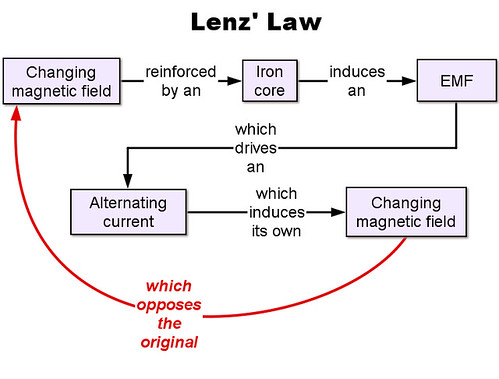Transformers and magnetic flux
A transformer is basically two coils, one usually powered with the second giving an output. It relies on magnetic flux interactions between the coils, and by adding a core we can increase coupling and efficiency. We know that during changes of current in the primary, the flux density in the core changes and this induces a current in the secondary, constant current results in no induced current in the secondary.
So assuming we are working with a constantly changing current in the primary and we have a good core material, we have a reasonable transformer. When we consider the secondary current. This current flows in the opposite direction to the primary and so produces a magnetic field that opposes that created by the primary.
If this is the case, how is it possible to get the high efficiency output of a transformer, the the currents in the secondary must oppose the magnetic field of the primary with its own magnetic field?
For me Both magnetic fields must coexist.
If we take a simple spool and wind two coils on it, then place an iron rod in the core, we have a simple transformer. We can measure the magnetic field to some extent by testing how much weight that core can hold when we apply a current. It is possible to see that when we draw a current from the secondary, the core will drop the weight it can hold to some extent. Possible proof of opposing currents cancelling magnetic fields, but if were the case surely the current in the secondary must drop too, but it does not. What am I missing here?
A transformer is basically two coils, one usually powered with the second giving an output. It relies on magnetic flux interactions between the coils, and by adding a core we can increase coupling and efficiency. We know that during changes of current in the primary, the flux density in the core changes and this induces a current in the secondary, constant current results in no induced current in the secondary.
So assuming we are working with a constantly changing current in the primary and we have a good core material, we have a reasonable transformer. When we consider the secondary current. This current flows in the opposite direction to the primary and so produces a magnetic field that opposes that created by the primary.
If this is the case, how is it possible to get the high efficiency output of a transformer, the the currents in the secondary must oppose the magnetic field of the primary with its own magnetic field?
For me Both magnetic fields must coexist.
If we take a simple spool and wind two coils on it, then place an iron rod in the core, we have a simple transformer. We can measure the magnetic field to some extent by testing how much weight that core can hold when we apply a current. It is possible to see that when we draw a current from the secondary, the core will drop the weight it can hold to some extent. Possible proof of opposing currents cancelling magnetic fields, but if were the case surely the current in the secondary must drop too, but it does not. What am I missing here?





Comment